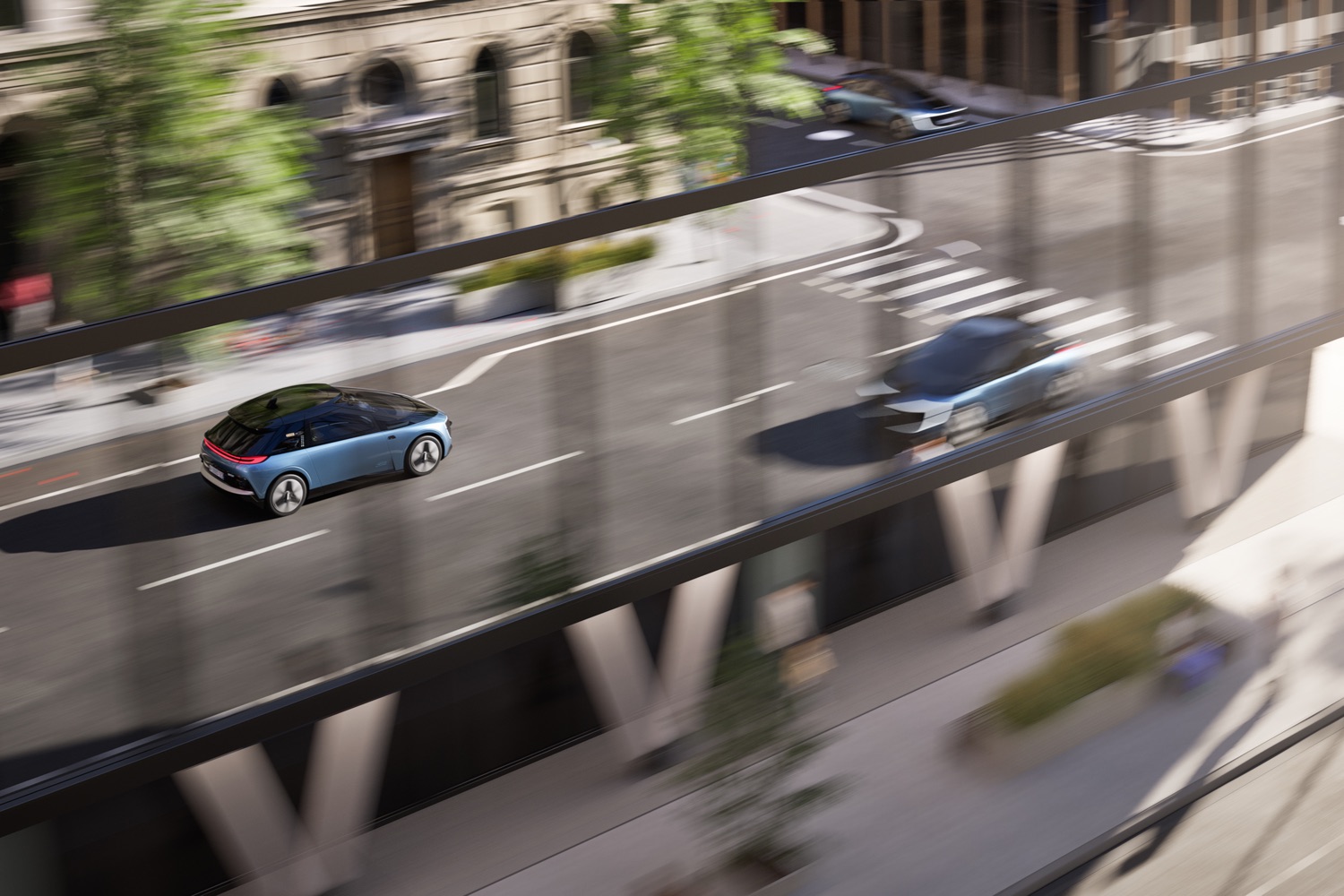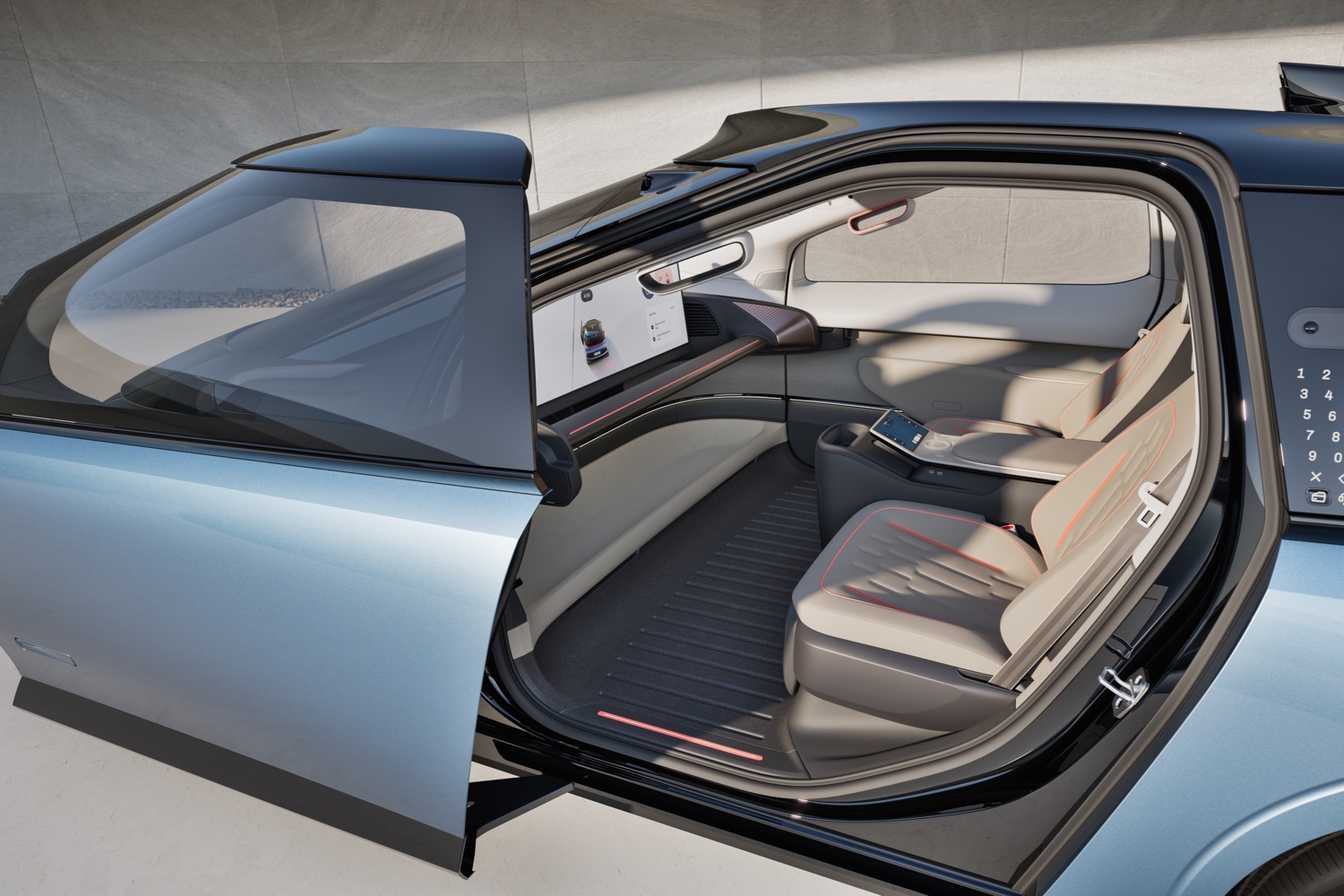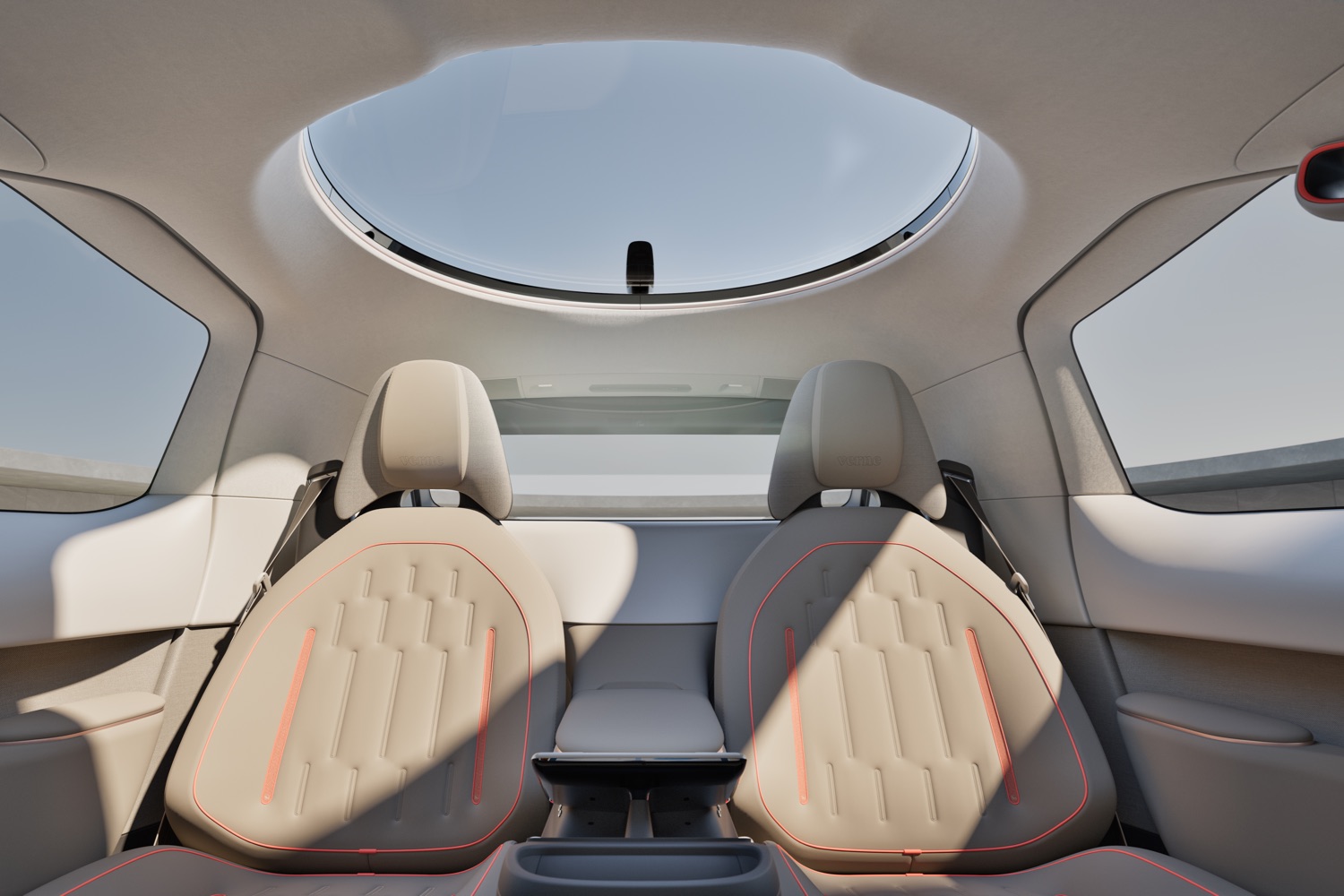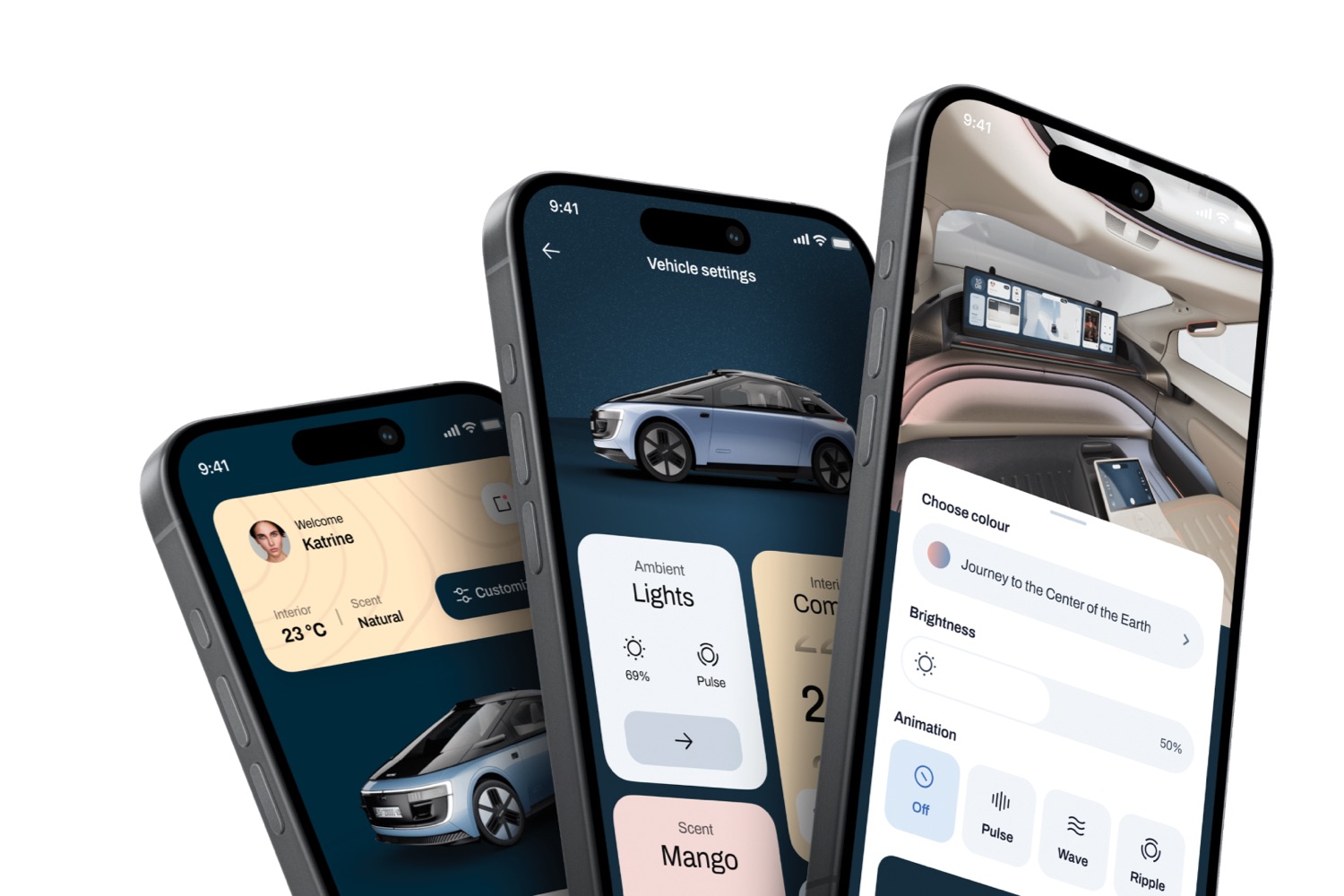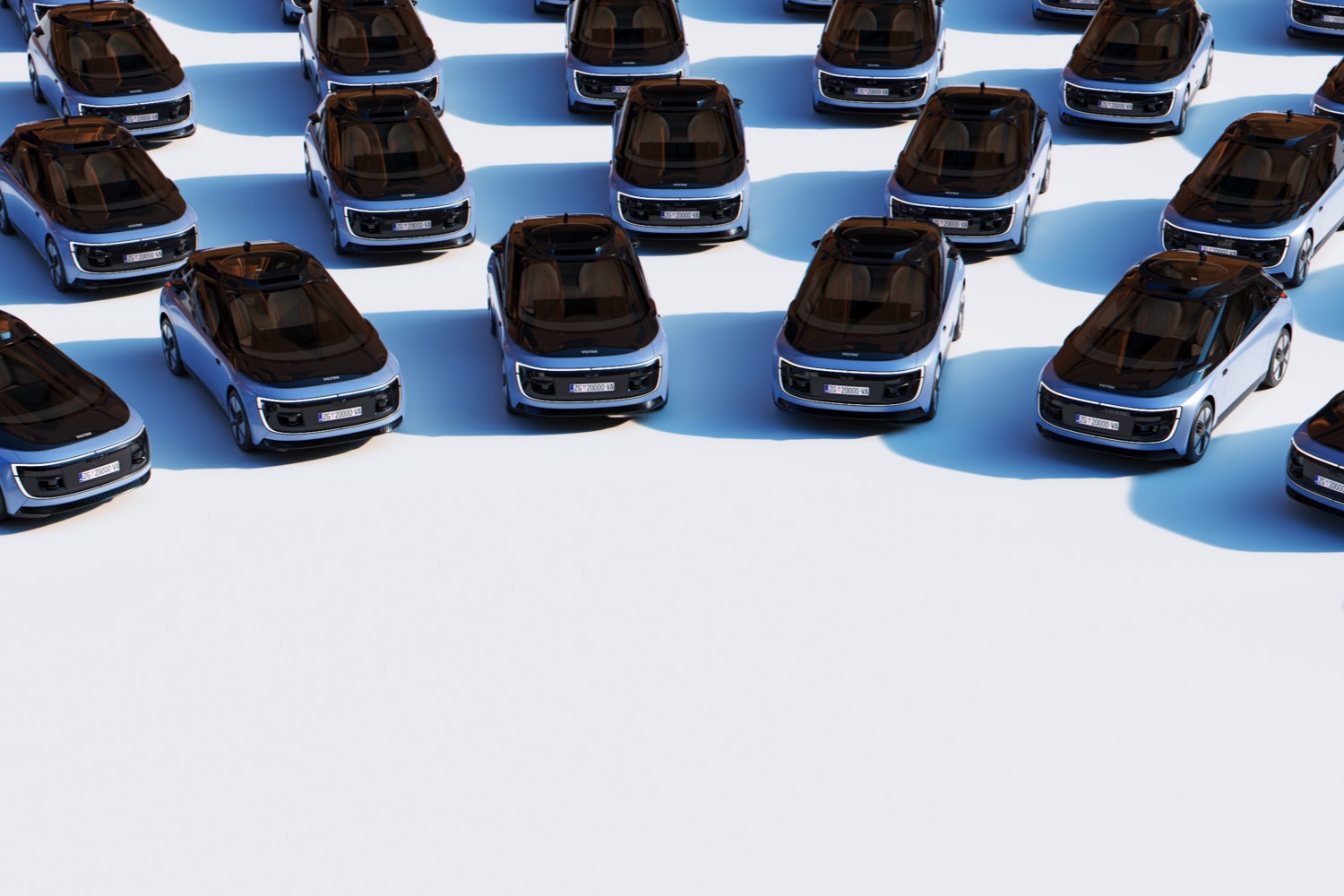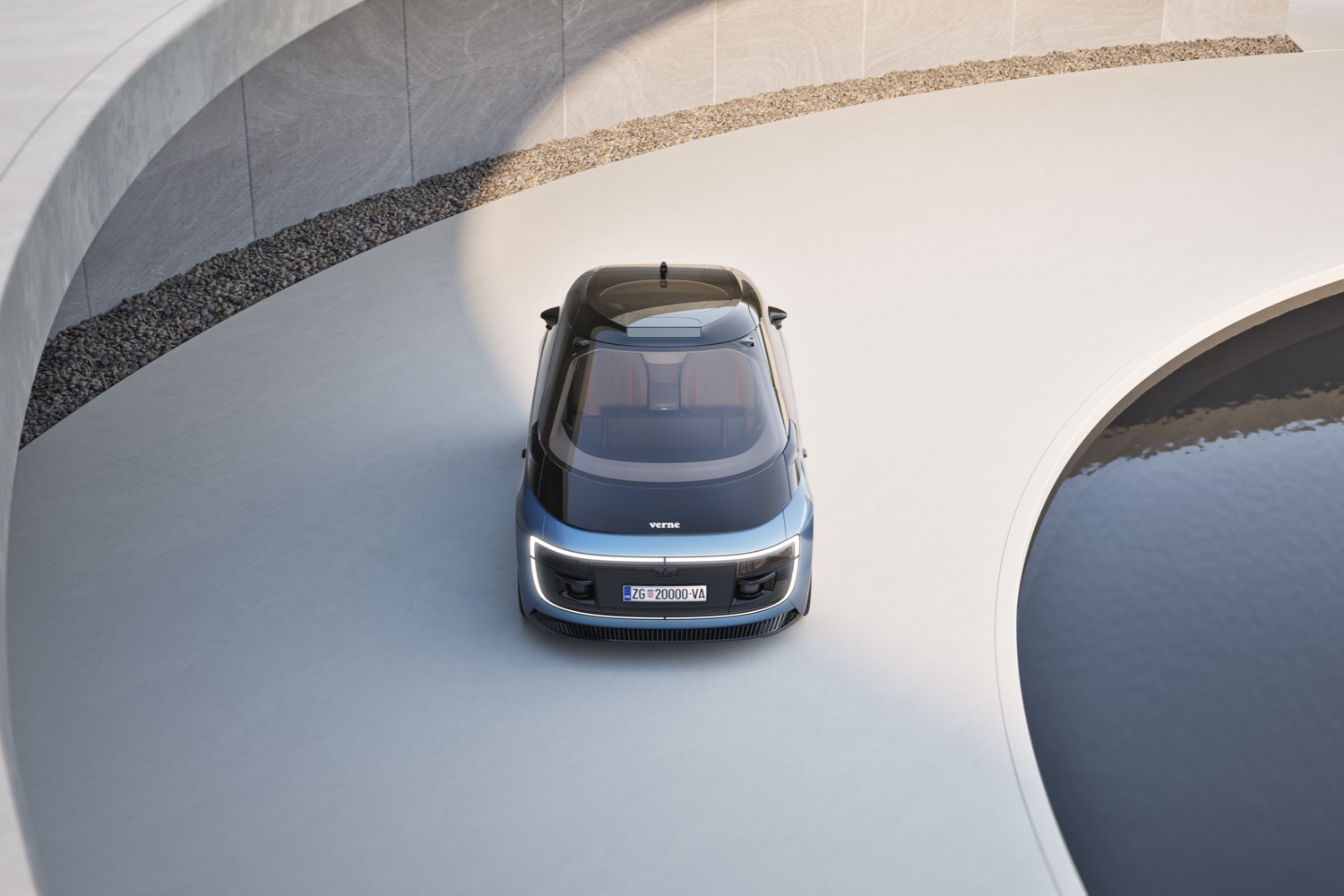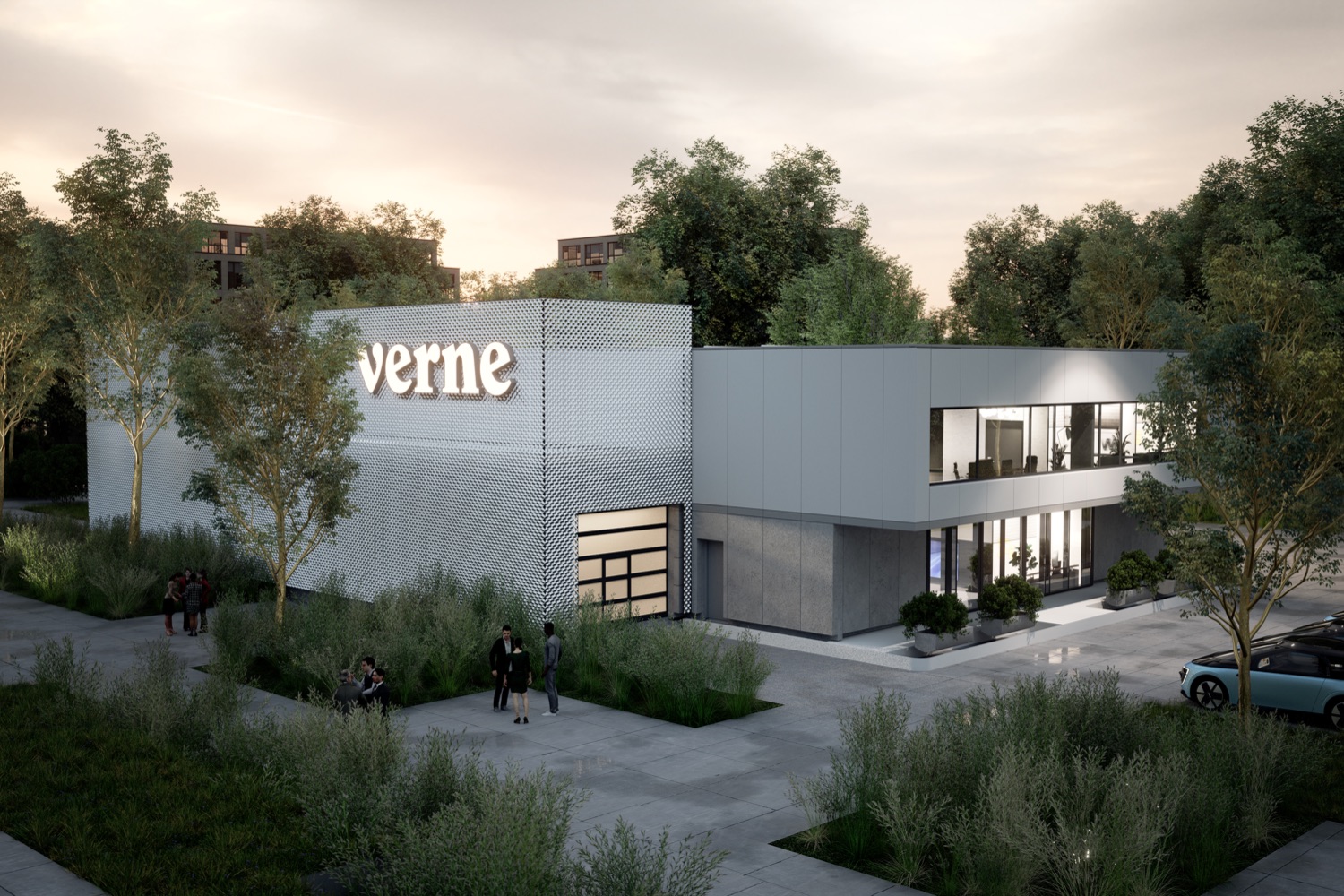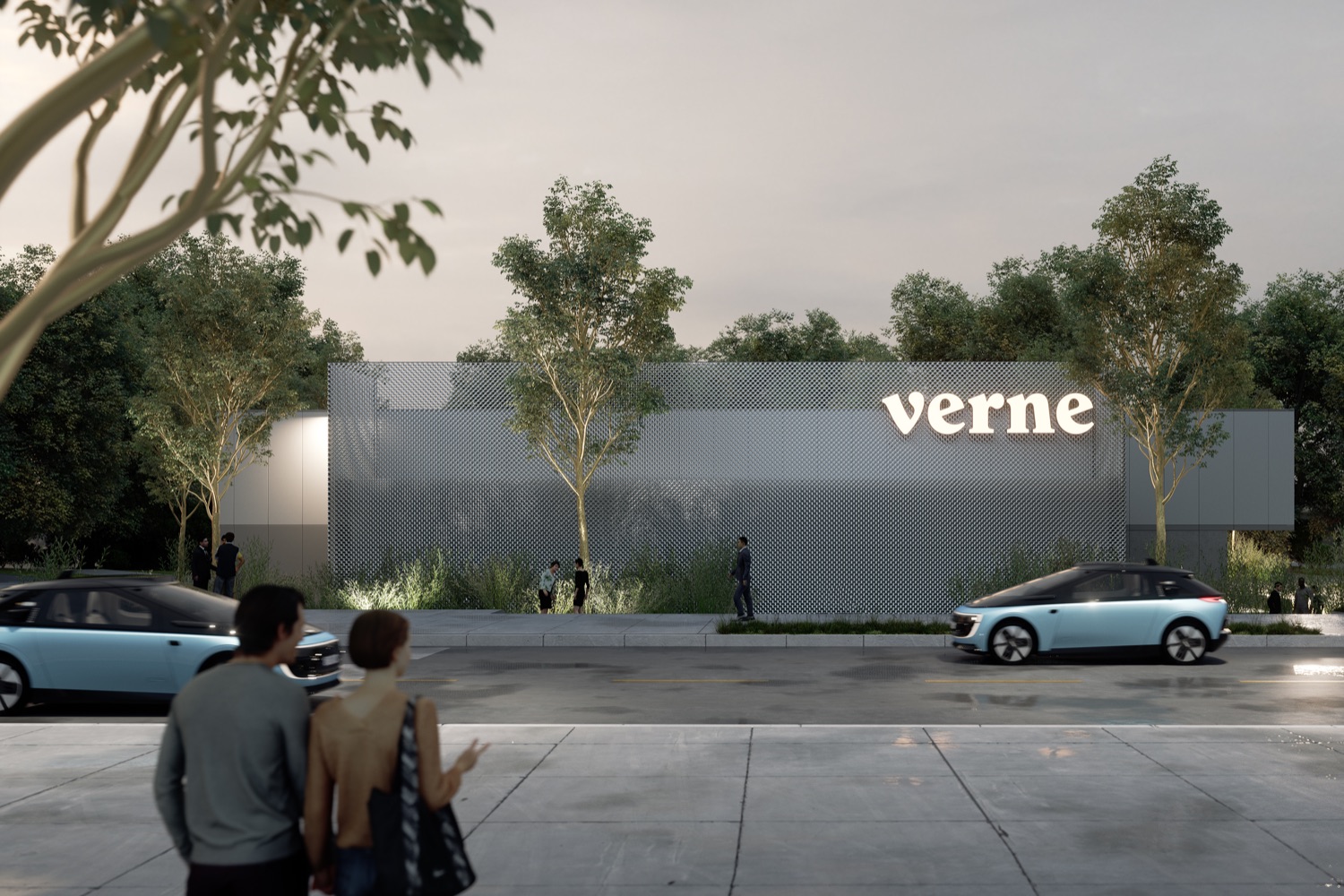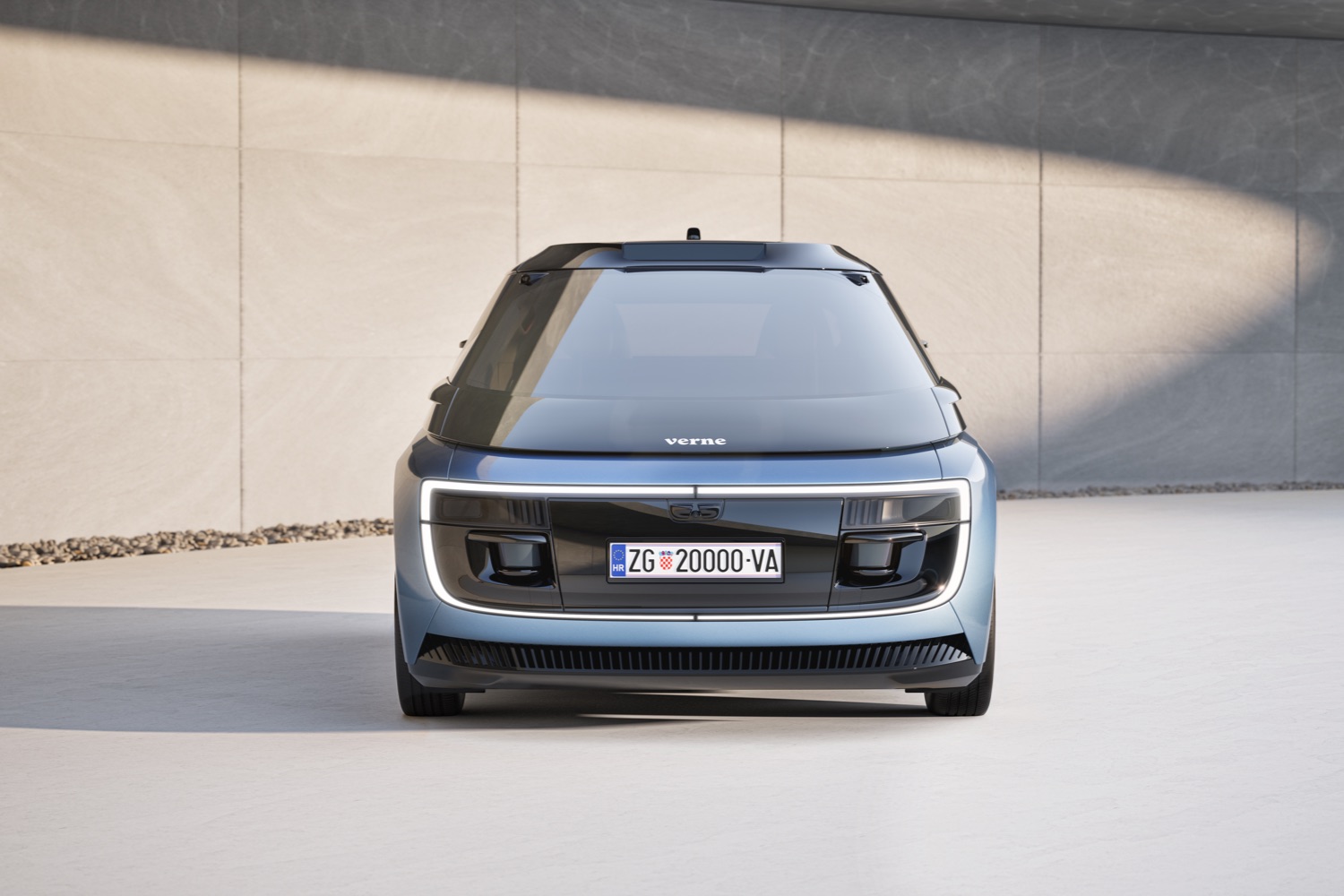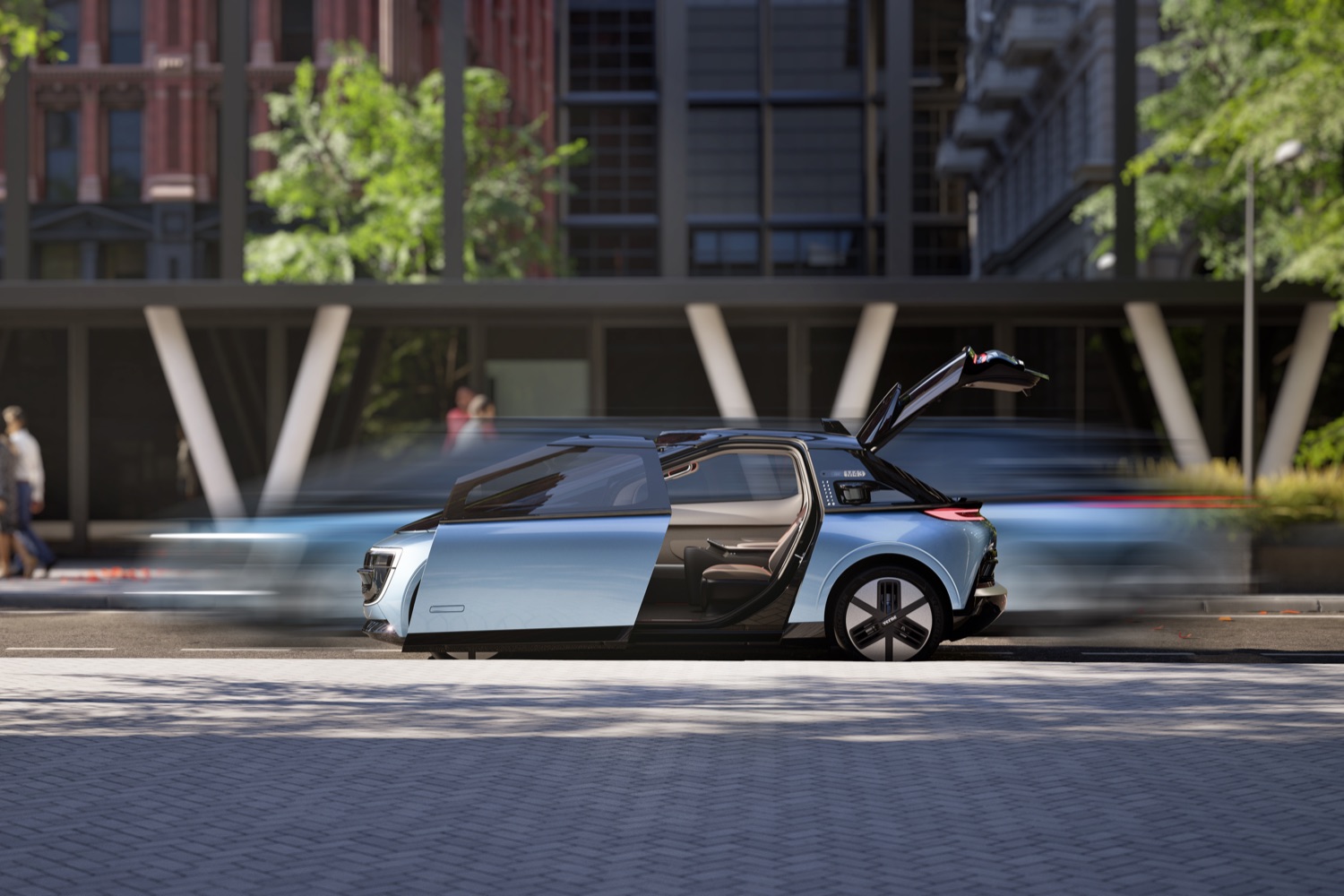Rimac is the Croatian supercar maker formed by Mate Rimac and most famous for being behind the brilliant Nevera electric hypercar, and for impressing Volkswagen Group so much that they gave Rimac (the man) the keys to the Bugatti empire. Now, though Rimac is setting out in a new direction with the Verne.
That name sounds familiar…
It should. The car is named for the famous fantasy author Jules Verne, this new car is a compact two-seat fully autonomous taxi that does without a steering wheel or even windscreen wipers. Rimac aims to have the Verne offering driver-free ride services in Zagreb, Croatia by 2026, before spreading to the rest of the world.
The Verne has been designed by Adriano Mudri, the designer of Nevera and Chief Design Officer at Verne, and features a distinctive long, sloping front screen which reaches almost all the way to the front bumper. The Verne is built on an entirely new electric and autonomous car platform and uses tech from Mobileye Drive to sense and understand its surroundings. According to Rimac, it’s “Built from the ground up [and] it is free from the compromises and disadvantages necessary in using a legacy platform built for human driving.”
Why does it look like that?
Let’s let the man who designed it explain… “We managed to achieve a very sleek design despite the additional content, compared to regular cars. We deeply integrated cameras, radars, short and long-distance-lidars, and their cleaning systems. At the same time, we were able to simplify the appearance by removing the typical human-driven vehicle features. We got rid of the windshield wipers. The same goes for side-view mirrors. This makes the aerodynamic performance more efficient and allows for easier cleaning. One typical element of an automobile we kept is the trunk. So you don't need to worry if you‘re going to the airport with a lot of luggage or just finished a major grocery shopping” said Mudri.
Needless to say, the idea is that you call up a Verne via a smartphone app, setting everything in the cabin - from heat to entertainment - before it arrives. The cabin lighting is likewise adjustable and so too is the scent(!).
Courtesy of Mobileye, the Verne will have a full suite of radar, camera, and LIDAR sensors to keep an eye on its surroundings and allow it, in theory, to navigate busy city streets. Rimac claims that variable weather is no issue for the Verne (even without the windscreen wipers…) and that it can even take local driving styles into account.
How many people can fit in a Verne?
Unlike most other autonomous vehicles which have thus far been used, the Verne has only two seats. Why? Adriano Mudri said: “Why a two-seater? Because the data shows that nine out of ten rides are used by one or two people. Therefore, we can satisfy most of all trips with a two-seater and create unmatched interior space in a compact-sized vehicle. We completely redefined interior space. There is more space than a Rolls-Royce to relax and spend your time well. We optimised the door opening so people can just step in and sit down straight away. Sliding doors were designed not to obstruct traffic flow around the vehicle while still arriving in style. Once inside, passengers can stretch out their legs and get super comfortable. We wanted to make the interior less automotive and more like a living room. There is no typical dashboard, no steering wheel, and no pedals. But an ultra-wide 43-inch display that you can use. This is for entertainment but also to get information about the journey during the ride.”
That 43-inch screen is backed up by a 17-speaker audio system, which suggests that some people might even hail a Verne not to go anywhere specific, but just to listen to some tunes.
Between the seats is a touchscreen controller which allows you to adjust all of the interior settings as you go, but crucially Rimac says that it also includes a specific controller called The Median. This is a physical switch which allows you to actually stop and start the Verne so that if it starts driving in a way which makes you uncomfortable, you can call a halt to proceedings.
Above the seats is a dramatic ‘Halo Ring’ circular sunroof, which Rimac claims is: “Nothing like you have ever seen before, it is a portal to new journeys and enables new views of the cities.”
How will all of this work?
Aside from the phone app, one crucial piece of Verne infrastructure will be the ‘Mothership.’ This, explained Verne CEO Marko Pejković, is: “a home where our Verne vehicles are taken care of. Here is where the Verne vehicles get inspected daily, get maintained daily, get cleaned daily, and get charged, so that they are always safe, clean, and ready to take you on a new adventure. The first Mothership will be built in Zagreb, next to our HQ”
The factory for the Verne will also be located in Zagreb, something of which the Verne team is very proud. “The location of the production facility will be in the southern part of Zagreb. Our vehicles will be assembled, calibrated, and tested here. This production facility will put Croatia on the map as a country that encourages the development of key future technologies that will bring many benefits to the community”, Pejković explained.
As for Mate Rimac, in the space of a week, he’s gone from showing off the mighty 1,800hp V15 hybrid Bugatti Tourbillon hypercar to launching the Verne project. “The end result would be the best possible mobility experience for everyone,” said Rimac. “This means that every customer will have a better service than the best mobility service enjoyed by the very rich, through the service that is affordable for all. You will have a safe and reliable driver, a vehicle with more interior space and comfort than the best limousines today, and a service that will be tailored to your needs in every possible way. The service will also provide customers with much more than just transportation from point A to point B. It frees up your travel time, allowing you to think, learn, or relax. Improving your life with every trip. We are shifting the attention from the technology itself to its benefits. Verne will transform travel time into a chance for personal growth, discovery, and enjoyment. In essence, enriching lives in every journey you take.”


